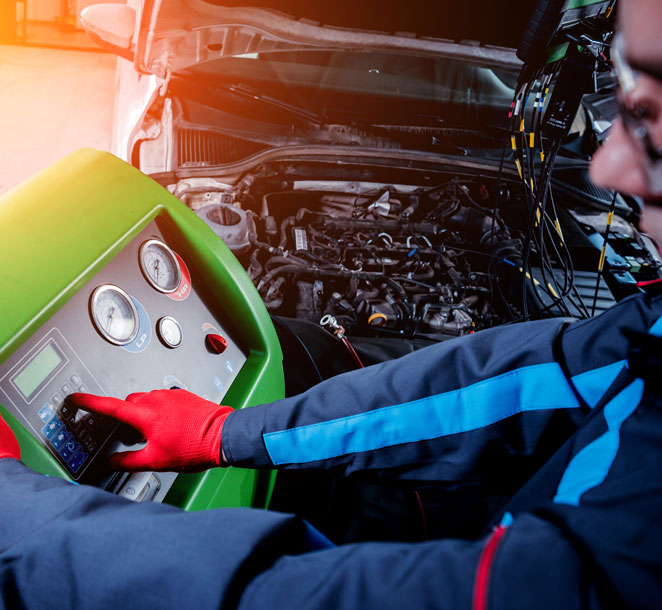
Nailing Down The Basics Of Car A/C Recharge
An automobile’s A/C system is quite complex. This is particularly true when it comes to the manner in which the car A/C recharge works, but below is a description of its components which greatly simplifies the process.
The Compressor And Blower Motor
Two of the most important components for the A/C recharge are the compressor and blower motor. The compressor should be considered the A/C system’s heart, as it acts as a pump which raises the temperature and pressure of refrigerant. Refrigerant gas which is low in pressure will go inside the compressor where it will be compressed into a gas which is hot and high pressure. Compressors however are incapable of compressing refrigerant into liquid form.
The blower motor is the contraption which pushes air through the vents of the car. The speed of this motor can be controlled via buttons, dials and switches which are usually found near the dashboard. The fan assembly and motor will be mounted by the evaporator, which draws air from either the exterior or interior of the car.
The Evaporator And Desiccant
The evaporator is responsible for the removal of moisture and heat from air which comes through the passenger cabin. The liquid refrigerant which is cooler will transform into gas when it absorbs the air’s heat. The desiccant is an agent which is hygroscopic, and which will remove moisture or dry it via absorption. It usually comes in a bag which can be found in a car’s receiver/drier, if it is equipped with a TXV, or Thermal Expansion Valve.
Why Air Conditioners Sometimes Freeze Up
Car owners may sometimes notice that their A/C system freezes up. The reason for this is because of two common culprits, which are either a problem with the airflow, or the air conditioning unit has an insufficient level of refrigerant. Additionally, the problem might be due to an evaporator which has become blocked, or an air filter which is dirty.
How Gauges Are Used For Recharging
The gauge is one of the most important components of recharging an A/C unit. When technicians review the air conditioning one of the first things they’ll do is use gauges to determine the pressure. Once the pressure is known you will then have accurate details regarding the vehicles refrigerant level.
High And Low-Pressure Service Ports
High-pressure ports are responsible for transferring refrigerant which is high pressure through an expansion valve, condenser, compressor or drier/receiver. A lower pressure port is the location where a connection is made to the A/C so that it can be recharged. Its location will vary from one vehicle to another but will extend from the compressor to the compartment for passengers. The difference between low and high-pressure ports is that high-pressure ports will typically be smaller diameter wise and the valve will be shorter. For ease of use, some hoses are manufactured so that they may only connect to the port’s low side.

